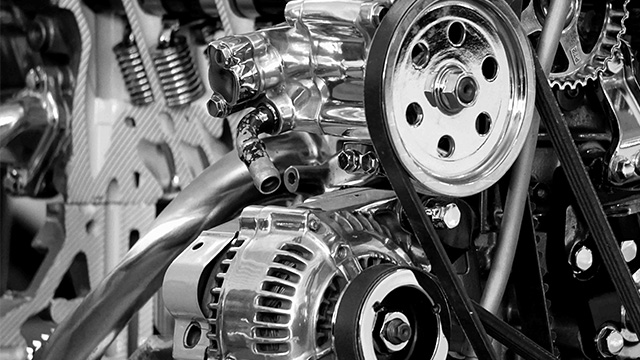The Vital Role of Automotive Component Manufacturing in the Automotive Industry
2024-12-31 10:39:21 hits:0

In the modern industrial landscape, the automotive industry stands as a paragon of technology intensity, capital concentration, and labor intensity, with automotive component manufacturing at its core. It serves as the foundation for the overall performance and safety of vehicles, and is a pivotal factor driving continuous innovation and development within the automotive manufacturing sector. This article delves into the significance of automotive component manufacturing, illustrating its irreplaceable position in the automotive industry through data and case studies.
I. Automotive Component Manufacturing: The Lifeblood of the Automotive Industry
Automotive components form the building blocks of vehicles, ranging from core powertrain parts like engines and transmissions, to structural components, electronic control systems, and auxiliary facilities such as seats and windows. Each component serves a specific function, collectively ensuring the safety, comfort, and efficient operation of vehicles. Statistics reveal that a regular sedan can contain upwards of ten thousand components, with luxury cars having even more, highlighting the precision and assembly required in automotive component manufacturing, which directly impact the performance and quality of the entire vehicle.
II. Data Highlighting the Strength of Automotive Component Manufacturing
Germany, a leading automotive manufacturer globally, exemplifies the strength of its automotive component manufacturing sector. The industry contributes nearly 40% of the total value of the automotive manufacturing sector in Germany. This is attributed to Germany's deep expertise in precision manufacturing and automation technologies. German automotive component companies, such as Bosch and Continental, leverage highly automated production lines and advanced manufacturing technologies to ensure high precision and quality of components, contributing to the exceptional performance of German cars in the global market.
In China, with the rapid development of the automotive industry, the automotive component manufacturing sector has also achieved remarkable accomplishments. Statistics show that the market size of China's automotive components exceeds four trillion Chinese yuan and maintains a steady growth trend. Numerous Chinese automotive component companies, like Huayu Automotive Systems and Wanfeng Auto Holding Group, have continuously enhanced their competitiveness through technological innovation and industrial upgrading, providing high-quality components to domestic and international automakers.
III. Case Studies in Automotive Component Manufacturing
Machining of Engine Pistons: The engine is the "heart" of a vehicle, and the piston is a crucial component within it. The machining precision of pistons directly impacts the performance and lifespan of the engine. By utilizing high-precision CNC machines and measurement technologies, pistons can be machined to micron-level accuracy, ensuring efficient operation and long-term stability of the engine.
Manufacturing of Electric Motors for Electric Vehicles (EVs): With the rise of EVs, the manufacturing of electric motors presents a new challenge for automotive component manufacturing. Critical components of electric motors, such as rotors and stators, require extremely high machining precision to ensure high efficiency and long lifespan. For instance, Tesla employs advanced precision machining technologies in the manufacturing of its electric motors, ensuring high performance and reliability, supporting the rapid development of EVs.
IV. Future Trends in Automotive Component Manufacturing
As the automotive industry evolves towards electrification, intelligence, and connectivity, automotive component manufacturing will also undergo significant changes. On one hand, the requirements for lightweighting and environmental friendliness will drive the adoption of new materials, such as aluminum alloys and carbon fibers, which necessitate more advanced machining technologies and equipment. On the other hand, smart manufacturing and digital production will become mainstream trends in automotive component manufacturing, incorporating technologies such as the Internet of Things, big data, and artificial intelligence to achieve intelligent and optimized production processes, improving production efficiency and product quality.
V. Conclusion
Automotive component manufacturing is not only the lifeblood of the automotive industry but also a pivotal driver of continuous innovation and development within the sector. Facing the future, the automotive component manufacturing industry needs to continually adapt to changes in market demand, strengthen technological innovation and industrial upgrading, and enhance its core competitiveness, contributing to the prosperous development of the automotive manufacturing industry.

 en
en  fra
fra  de
de  ru
ru  gle
gle  th
th  ara
ara  it
it  jp
jp  kor
kor  zh
zh 


